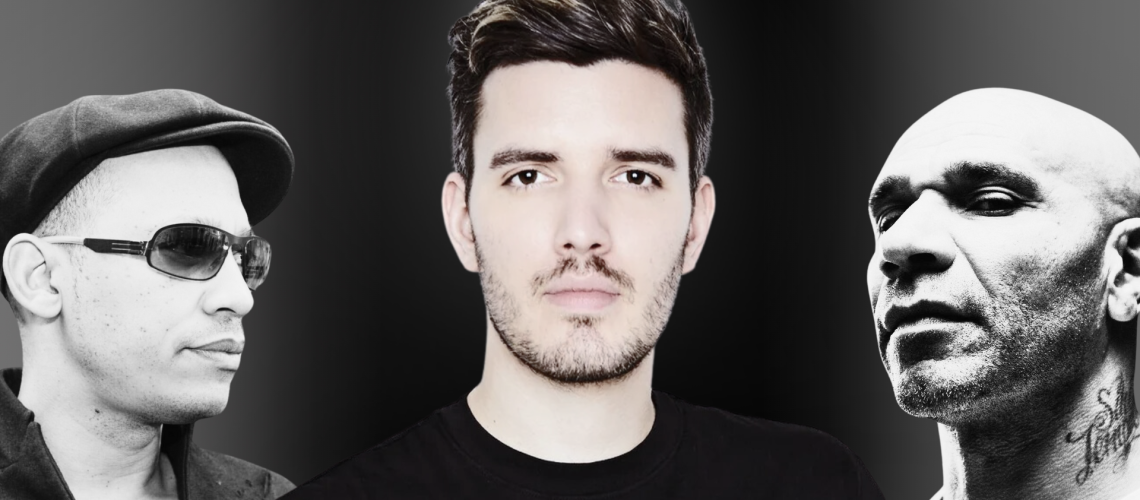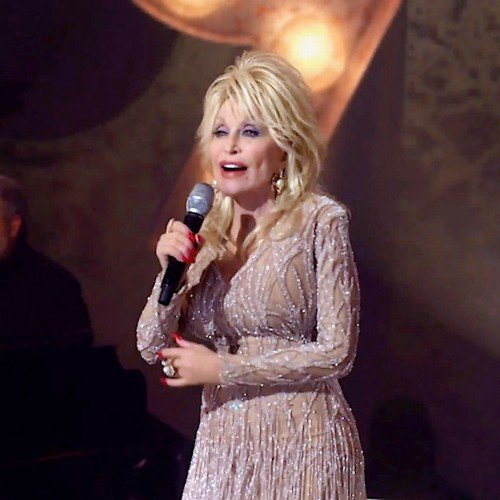So, what is Drum and Bass? Often called DnB or D&B, Drum and Bass stands as a unique genre in the electronic music world.
It’s almost impossible to pinpoint exactly what Drum and Bass is in a single sentence. The genre draws influence from so many other genres that two “Drum and Bass” tracks might not have much in common.
All Drum and Bass tracks share some commonalities though: a fast tempo of 170+ BPM, a heavy focus on the drums and bass (duh!), and frequent use of breakbeats and classic funk drum breaks.
If that sounds confusing, don’t worry! We’ll cover everything you need to know in this article, from the history of Drum and Bass, the core elements of a Drum and Bass track, as well as the most popular subgenres and artists within Drum and Bass in 2024. Let’s go!
What is Drum and Bass in a Nutshell?
If you’ve come to this article, you likely want a TL;DR on “What is Drum and Bass”. So we won’t waste your time with any fluff, here’s what Drum and Bass is in a nutshell:
- a mostly underground genre, combining elements of reggae, dub, and breakbeats at its origin;
- tracks are usually 170-175 BPM;
- however, the kick and snare pattern doesn’t follow a classic 4-to-the-floor pattern. Instead, the second kick of each bar falls on the “and” of beat 3;
- the drums often feature multiple “breaks” layers. These are often drum loops from classic funk songs that have been sped up;
- the bass is often deep and rolling. The Reese bass is a staple of the genre;
- sampling, especially in the early days, is also a cornerstone of DnB;
- finally, drum and bass can incorporate elements from any other genre, including jazz, soul, R&B, or acid house.
Are you looking for a guide on how to make Drum and Bass? Check out our comprehensive guide here!
However, Drum and Bass can take on multiple shapes and forms.
Here are 2 tracks that don’t share much in common, but would both be considered DnB:
Funnily enough, both tracks are called Tell Me 😅
Although both tracks don’t share much in common sonically, they do have:
- roughly the same kick and snare pattern;
- same tempo around 170 BPM.
That is your key to recognizing a Drum and Bass track 😉. Now that we’ve got the basics out of the way, let’s dive deeper into the history of DnB.
The History of Drum and Bass
Drum and Bass emerged in the UK in the early 1990s. Its roots can be traced back directly to Jungle.
Jungle music, with its rapid breakbeats and heavy basslines, served as the precursor to D&B.
Jungle music drew inspiration from reggae’s syncopated rhythms and dub’s powerful low-end frequencies. Within London’s underground scene, DJs and producers began to experiment with faster tempos and more complex drum patterns. Beats were chopped up and re-arranged, creating powerful and often crazy drum patterns that were previously unheard.
As the genre matured, influential figures emerged who would shape its sound. Goldie, often hailed as the “Godfather of Drum and Bass,” introduced a more polished, cinematic quality to the music.
By stripping some of the more aggressive aspects of Jungle music, and introducing more professional production and a higher emphasis on melody, Drum and Bass was born.
Other artists like LTJ Bukem pushed Jungle music into a more atmospheric territory. This laid the groundwork for the subgenre called Liquid D&B (but more on that later).
Since then, Drum and Bass has become almost an umbrella term for a variety of genres including techstep, jump-up, liquid funk, and many more. If you’re interested in the history of Drum and Bass, I would highly recommend reading “Renegade Snares”:

This book retells the early days of Jungle and Drum and Bass music, with interviews from the scene’s most prominent figures such as Goldie, Fabio and Grooverider, and Photek.
Characteristics of Drum and Bass
Drum and Bass is a genre defined by its blend of rapid beats, deep basslines, and innovative sampling techniques. Let’s explore each of these components.
Drums
At the heart of DnB lies its distinctive drum patterns.
The genre typically operates at a tempo of 170 to 180 BPM, with 174 BPM being the most common BPM. The drums are often constructed using breakbeats, which are rhythmic loops or segments of tracks, most famously the “Amen break.” This particular break, a short drum solo from The Winstons’ 1969 track “Amen Brother,” has been chopped, rearranged, and reimagined countless times, becoming a staple in D&B production.
Producers manipulate these breaks to create intricate, high-energy drum patterns that drive the track forward.
The drum sounds in D&B are usually sharp and punchy, with a focus on snare hits that cut through the mix, hi-hats that add texture, and kick drums that sync tightly with the bassline to create a cohesive rhythm.
The complexity of the drum patterns can vary widely depending on the subgenre. Some styles will only feature a kick, snare, and some sparse hi-hats. Others will layer multiple breaks, percussion layers, and more to create a “wall of sound”.
Bass
After the drums, the bass is the second most important part of DnB. The bass in Drum and Bass is not just heard; it’s felt.
Characterized by deep, rolling sub-basslines, the bass is a fundamental element that gives the genre its name. In D&B, basslines are often low-frequency. Think the opposite of a screechy FM bass that you might hear in a Dubstep track. Apply some low-pass filtering to it, and you’ll get closer to what is often used in DnB.
The classic Reese bass for example is created by detuning and layering multiple saw waves. Producers will often use both a sub-bass and a mid-bass. This ensures the bass will have maximum impact of club speakers, but will also be heard on cheap, home Bluetooth speakers.
Here are a few examples of basslines you might hear in DnB:
Basslines in D&B are often played “legato”. This means that all the notes are connected and played smoothly. This means there is no silence between notes like you might have in a House track for example:
Sampling
Sampling is a cornerstone of Drum and Bass production. After all, the genre emerged from Jungle music, which was literally built on sampling.
Sampling involves taking segments of audio from other recordings—whether it’s a breakbeat, a vocal snippet, or a sound effect—and integrating them into a new track.
In D&B, sampling can serve multiple purposes. Breakbeats are often sampled, chopped up, and rearranged to create new exciting patterns. However, vocal samples can also be used. Vocals from reggae, hip-hop, or soul records might be lifted and manipulated to add a human touch to the track.
Melodic elements, such as string sections, choirs, or piano motifs can also be sampled.
Sampling is a whole art itself, which we explore in much detail here:
The creativity in sampling is what often sets a Drum and Bass track apart. Producers have experimented with sampling from jazz, lounge, soul, hip-hop, and much more to create their own brand of Drum and Bass.
This is also why Drum and Bass is probably one of the most varied genres in electronic music. You can sample from literally any style of music, and make it fit to a 174 BPM and DnB drum pattern.
3 Subgenres of Drum and Bass You Need to Know
As explained, Drum and Bass draws influence from many other genres. That is why it has given birth to a whole range of subgenres. Here are some of the most popular. For each one, we’ll also give you some artists you can check out.
Liquid DnB
Known for its smoother, more melodic sound, liquid D&B emphasizes lush pads, soulful vocals, and jazzy influences.
It’s the subgenre you’d likely hear in a relaxed lounge or a garden party.
Artists like Calibre, High Contrast, and Lenzman have been instrumental in shaping this style.

Neurofunk
On the opposite end of the spectrum, Neurofunk is dark, aggressive, and complex.
With its roots in techstep, Neurofunk features heavy, distorted basslines, glitchy sound design, and a relentless drive. This subgenre is all about pushing the limits of sound engineering and sound design. Artists like Noisia and Black Sun Empire are frontrunners in Neurofunk.
Jump-Up
Jump-Up is all about raw energy. Screechy basslines are put front and center and often play the role of the lead melody as well. The drums are more stripped back. Jump-Up is straight-up made for the dancefloor, and the most popular Jump-Up tracks have an anthemic quality to them.
Jump-Up is less about intricate sound design. The focus is on making a massive drop and memorable bass melody that people can sing along to. Artists like DJ Hazard and Macky Gee and his track Tour (with 86M streams on Spotify alone) have been at the forefront of this Drum and Bass subgenre.
The Place of Drum and Bass in Popular Culture
Drum and Bass is a curious genre in that it has always remained mostly underground. However, every few years, it creeps into the mainstream with some radio airtime before creeping back into the shadows.
Over the last 20 years, artists like Rudimental, Sigma, Pendulum, Netsky, and Chase & Status have had massive commercial success.
But Drum and Bass’s relationship with mainstream popularity has been cyclical. While a DnB artist or track might “pop off”, it has never become a mainstay of popular culture in the same way that House or Techno have. Is that a good thing or a bad thing? The debate rages on Internet forums. Nevertheless, Drum and Bass has always maintained a strong and loyal following, with dedicated communities and events keeping the scene vibrant.
While the genre might not be front and center at the biggest festivals, it has definitely grown in popularity. Look no further than the recent collaboration between Chase and Status and Stormzy peaking on the UK charts.
Despite its fluctuating presence in the mainstream, Drum and Bass has proven to be a resilient and influential force in popular culture, with a continued presence in video games and advertisements. It continues to inspire new generations of producers and listeners, ensuring that the genre remains a vital part of the global music landscape. Whether it’s dominating the charts or thriving in underground clubs, Drum and Bass holds a unique place in the world of music, constantly evolving while staying true to its roots.




